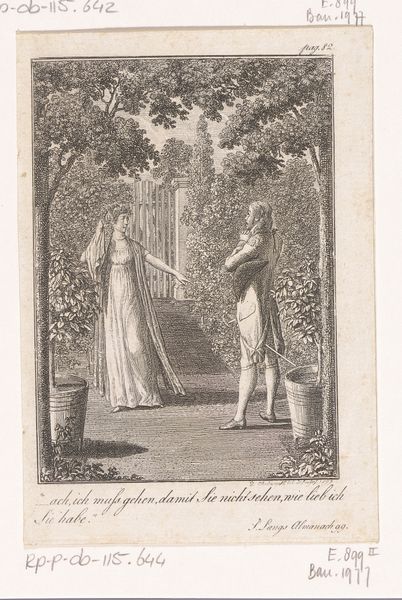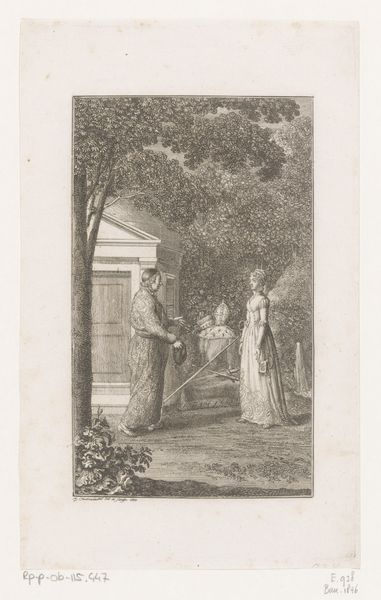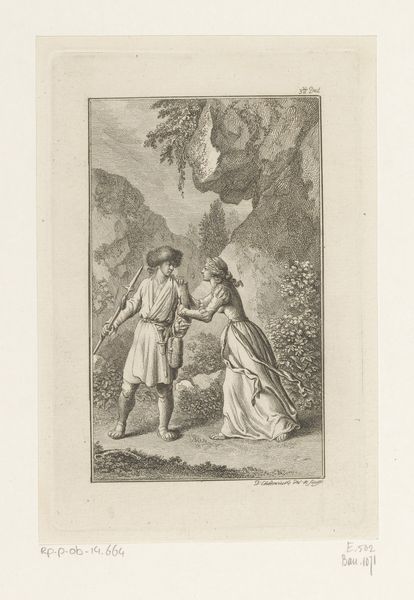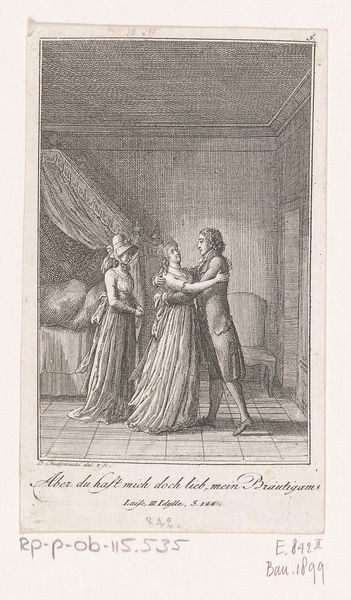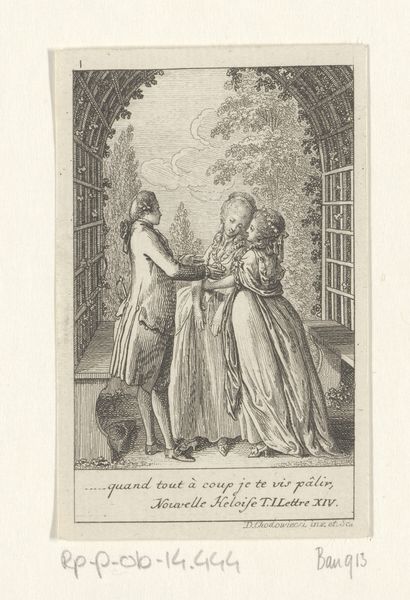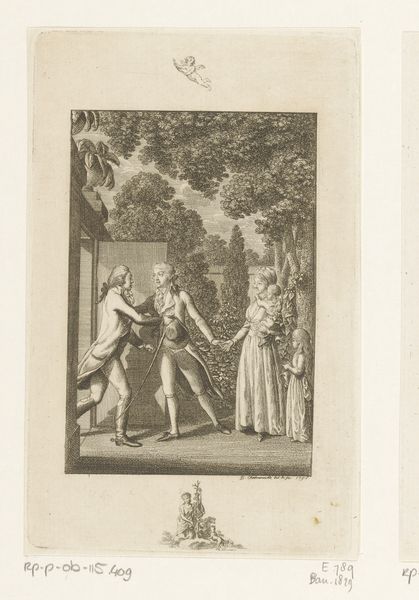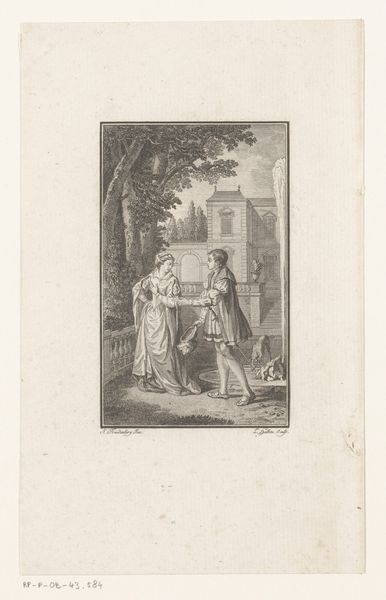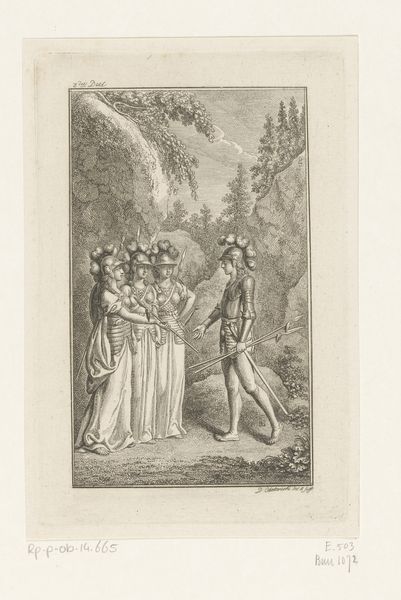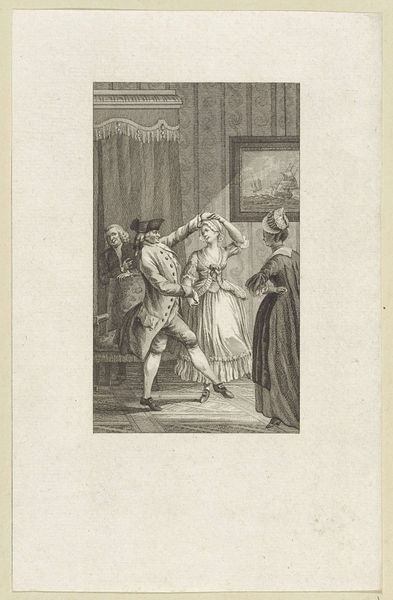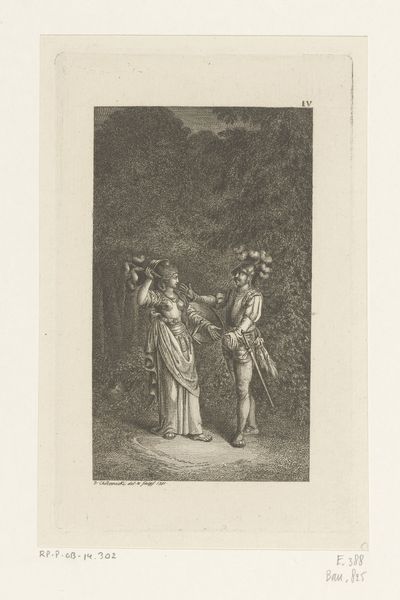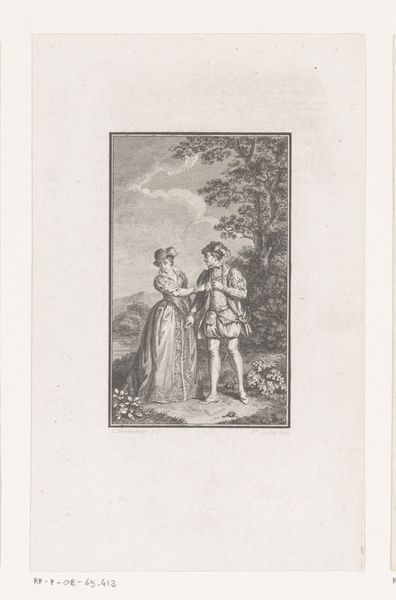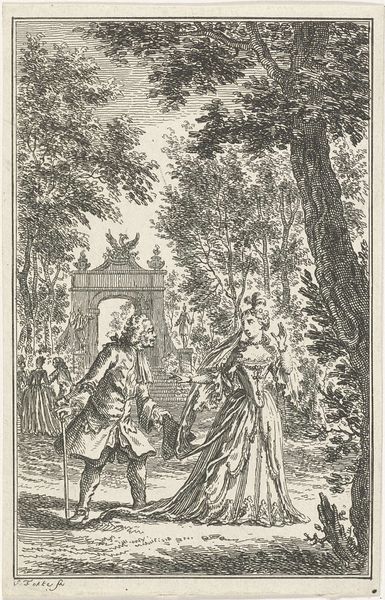
Dimensions: height 113 mm, width 83 mm
Copyright: Rijks Museum: Open Domain
Editor: So, here we have "Elise pointing to her father's grave," a print made in 1799 by Daniel Nikolaus Chodowiecki, currently held in the Rijksmuseum. There's such a stark contrast in expressions and posture between the figures. What narrative and social dynamics are at play in this engraving? Curator: That’s a perceptive observation. The image resonates with the socio-political currents of the late 18th century, especially how sentiments and morality were portrayed in domestic settings. Genre painting became a stage to highlight the value system of the emerging bourgeois class. Considering its cultural context, do you observe aspects linked to emerging familial roles? Editor: It feels like a controlled display of emotion. While pointing at the grave, the female figure doesn't appear dramatically grief-stricken. It appears reserved... composed. Curator: Exactly! Consider this was created shortly after the French Revolution. How might depictions of idealized, controlled behaviour align with or react to the anxieties and upheavals of that era? Notice that the engraver emphasizes gesture and attire in creating a structured presentation. In your opinion, what purpose did these "tableaux" serve in their day? Editor: Perhaps they were trying to portray a return to order, a moral stability they feared they were losing. And by displaying such control, were they implicitly setting an example for how people, especially women, should behave publicly? Curator: Precisely. Art served a didactic function; prints like this disseminated these ideals to a broader public. It brings an extra dimension to viewing practices we take for granted. Editor: That completely shifted my understanding! It's not just a sentimental scene but also a socio-political statement, packaged neatly for public consumption. I didn't really clock that originally. Curator: Exactly. Looking at art through the lens of social history enables us to decode layers of meaning beyond the aesthetic.
Comments
No comments
Be the first to comment and join the conversation on the ultimate creative platform.
